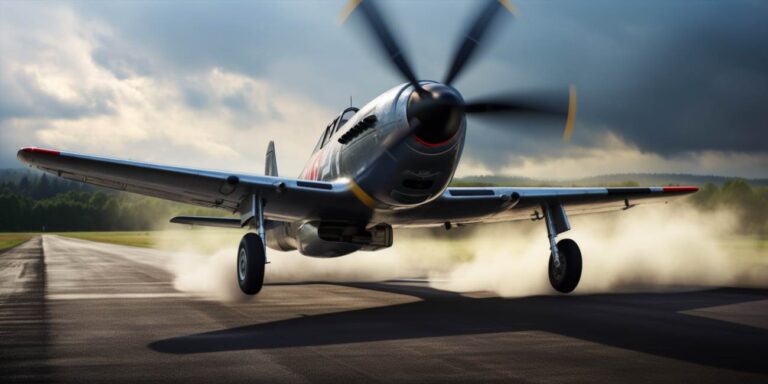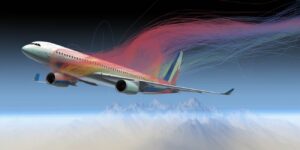The pioneering aircraft responsible for this feat was the Messerschmitt Me 262, a marvel of engineering and innovation. Developed by the German Luftwaffe during World War II, the Me 262 was the world’s first operational jet-powered fighter aircraft, showcasing the culmination of years of dedicated research and development.
The genesis of jet propulsion can be traced back to the visionary work of Sir Frank Whittle and Dr. Hans von Ohain, who independently conceptualized the idea of jet engines in the early 1930s. Whittle, a British Royal Air Force officer, and von Ohain, a German engineer, laid the groundwork for a technology that would revolutionize aviation.
However, it was the Germans who successfully translated these concepts into reality, with the Me 262 becoming the first operational embodiment of jet-powered flight. The aircraft’s maiden flight marked a watershed moment, showcasing its exceptional speed and agility compared to traditional propeller-driven planes.
The historic flight took place at the hands of test pilot Fritz Wendel. As the Me 262 soared through the skies, its twin Junkers Jumo 004 engines roared, symbolizing a leap into the future of aerial warfare. The significance of this event cannot be overstated, as it heralded a paradigm shift in military aviation.
With a top speed of around 870 km/h (540 mph), the Me 262 outpaced its piston-engine counterparts, underscoring the revolutionary nature of jet propulsion. Its combat debut, however, was delayed until 1944 due to production challenges and strategic considerations.
As the Me 262’s capabilities became known, the Allies recognized the need to adapt to this new era of aerial warfare. The impact of the first operational jet aircraft extended far beyond the battlefield, influencing subsequent generations of fighter planes and commercial jets.
In retrospect, the inaugural flight of the Messerschmitt Me 262 on that fateful August day was a harbinger of aeronautical evolution. It set the stage for a future where jet-powered aircraft would dominate the skies, leaving an indelible mark on the history of aviation.
Messerschmitt me 262 fighter jet with revolutionary engines
The Messerschmitt Me 262 fighter jet stands as a testament to aviation innovation during World War II, boasting revolutionary jet engines that catapulted it into the annals of history. Developed by the Germans, this cutting-edge aircraft was the world’s first operational jet-powered fighter.
At the heart of the Me 262’s groundbreaking design were its Junkers Jumo 004 engines. These jet propulsion marvels marked a paradigm shift in aviation technology, propelling the aircraft to unmatched speeds. The Jumo 004 engines were a triumph of engineering, featuring an axial-flow compressor and a combustion chamber that set the stage for future jet propulsion systems.
The decision to equip the Me 262 with jet engines was a strategic move to gain an edge in aerial warfare. While traditional propeller-driven aircraft dominated the skies, the Messerschmitt team recognized the potential of jet propulsion for increased speed and altitude capabilities.
One of the Me 262’s notable characteristics was its sleek and streamlined fuselage, a design optimized for high-speed flight. The wings, swept back for reduced drag, contributed to the jet’s impressive performance. With a top speed of around 900 km/h (560 mph), the Me 262 outpaced its contemporaries, leaving propeller-driven fighters in its wake.
The Me 262 entered service in 1944, altering the dynamics of aerial combat. Its unmatched speed allowed for swift interception of Allied aircraft, making it a formidable adversary. The jet’s combat capabilities were evident in engagements over the European theater, where it posed a significant threat to Allied bombers.
Despite its technological prowess, the Me 262 faced challenges, including production delays and resource shortages. The German aviation industry struggled to manufacture these sophisticated aircraft in sufficient numbers, limiting their impact on the outcome of the war.
Gloster meteor the first allied jet fighter in aerial battles
The Gloster Meteor holds a distinguished position in history as the first allied jet fighter to grace the skies during aerial battles. This technological marvel, powered by Rolls Royce jet engines, marked a significant leap in aviation capabilities, altering the dynamics of dogfights in the theaters of World War II.
The advent of the Gloster Meteor was a game-changer, introducing a new era where speed and agility became paramount in air combat. The heart of this formidable aircraft lay in its utilization of cutting-edge Rolls Royce jet engines, propelling it to astonishing speeds that redefined the very essence of air superiority. The top speed achieved by these engines not only outpaced traditional propeller-driven planes but also set the stage for unprecedented maneuvers in the unforgiving realm of dogfights.
The Rolls Royce jet engines equipped on the Gloster Meteor were a testament to engineering brilliance, pushing the boundaries of what was previously thought possible. Their intricate design and superior performance elevated the aircraft to new heights, quite literally, as it soared through the skies with unmatched speed and precision.
In the chaotic landscapes of World War II, where every advantage could tip the scales of victory, the Gloster Meteor armed with Rolls Royce jet engines became a symbol of technological prowess. It outpaced traditional adversaries, leaving propeller-driven opponents struggling to match its formidable top speed during high-stakes dogfights.
The evolution from propellers to jet engines not only transformed the physical aspects of aerial combat but also reshaped the strategies employed by aviators. The Gloster Meteor, with its reliance on Rolls Royce jet engines, brought about a paradigm shift in the art of warfare, ushering in an era where velocity and maneuverability became decisive factors in the outcome of dogfights.
As the world watched in awe, the Gloster Meteor powered by Rolls Royce jet engines became synonymous with the future of aviation. Its remarkable top speed and agility made it a force to be reckoned with, setting the stage for subsequent generations of jet-powered fighters that would dominate the skies in conflicts to come.
In the relentless dance of aerial combat, the Gloster Meteor’s legacy endures as the pioneer that introduced the world to the formidable alliance of jet power and air supremacy. Its exploits in dogfights during World War II remain etched in history, a testament to the indomitable spirit of innovation and the power of Rolls Royce jet engines.
Lockheed yp-80 prototype testing program important milestone
The Lockheed YP-80 prototype testing program marked a pivotal moment in the history of USAF game-changing military aviation technology. This groundbreaking endeavor set the stage for advancements that would shape the future of aerial warfare.
The YP-80, also known as the Shooting Star, emerged during the closing stages of World War II, introducing a new era of jet-powered flight. Its prototype testing program was a critical phase that validated the aircraft’s capabilities and paved the way for its integration into the United States Air Force (USAF).
One of the key milestones in the testing program was the evaluation of the aircraft’s speed. The YP-80’s remarkable velocity not only outpaced contemporary propeller-driven counterparts but also showcased the potential for rapid response and interception capabilities, fundamentally altering traditional military aviation strategies.
Maneuverability was another aspect that underwent rigorous scrutiny. The YP-80 demonstrated an agility previously unseen, providing the USAF with a versatile platform capable of executing dynamic aerial maneuvers. This newfound agility redefined air combat tactics, allowing for increased tactical flexibility and outmaneuvering adversaries.
Moreover, the YP-80’s engine performance played a pivotal role in its success. The aircraft was equipped with a turbojet engine that not only enhanced speed but also contributed to improved altitude capabilities. This technological leap in engine design laid the groundwork for subsequent generations of jet-powered military aircraft.
During the testing phase, the YP-80 also underwent comprehensive weapon systems evaluations. The integration of cutting-edge armament showcased the aircraft’s potential as a formidable combat asset. This, coupled with its high-speed capabilities, positioned the YP-80 as a revolutionary force in military aviation.
The significance of the YP-80 prototype testing program extended beyond the confines of traditional air superiority. It heralded a paradigm shift in military aviation, influencing the development of subsequent generations of fighter jets. The technological advancements validated through this program laid the foundation for the evolution of the USAF’s game-changing military aviation technology.
See also:






